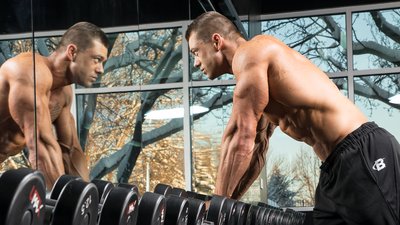"I lift weights, so why aren't I getting huge?" I've heard this lament a thousand times from guys who do everything right—hitting the weights hard, eating the right food, getting good rest—but don't get a payoff in muscle growth. What's up with that?
Merely lifting weights, even if you're using the optimal hypertrophy ranges of 8-12 for the upper body and 10-20 for the lower body, won't necessarily get you the extreme muscle mass you see in advanced bodybuilders. Even if your form is good, you may never experience those sought-after gains. What many people are missing is the contributions your nervous system and connective tissues can make.
You may know people who are much stronger than they look based on their physical size, and others who seem surprisingly weak for how massive they are.
What gets you big and strong isn't just hoisting a lot of iron, it's consciously training muscle—and there is a world of difference between the two. The difference is how well you develop your mind-muscle connection.
What is the mind-muscle connection?
Having a good mind-muscle connection means being able to isolate a specific muscle or muscle group and feel it working throughout every inch of a rep. With a strong mind-muscle connection, you're able to feel the muscle contract as you push, pull, or raise a weight: You can feel it elongate as you return the weight to the start position.
With training, it's easy to spot people who don't have a good mind-muscle connection. These are the people who complain of having body parts that are "stubborn" and "won't grow," who can bench press impressive numbers but have poor chest development. These are people who, instead of using the mind-muscle connection to engage their chest muscles, unconsciously make their front delts and triceps do all the work. The pecs don't grow because they aren't being used.
This same problem can crop up anywhere in the body. Mastering that neural connection behind the mind-muscle connection is typically the key that unlocks growth throughout the entire body.
So, how do you go about doing that? I have five tried-and-true methods you can start using today!
Technique 1: Practice flexing
The best way to learn how to consciously isolate and contract any given muscle is to spend time forcefully flexing that muscle. I hesitated to say "posing," since that term connotes a set of standard poses used in competitive bodybuilding: the front double biceps, front lat spread, or side chest.
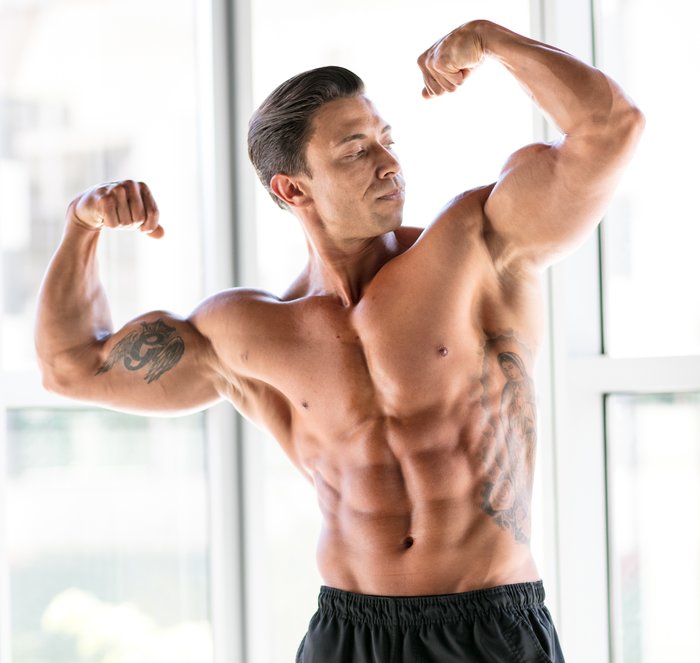
You may have no interest in competitive bodybuilding and don't want to waste time learning how to pose. But, I guarantee you've all done your share of "posing" already, like when you throw up an arm and flex your biceps. In fact, do it right now, with your dominant arm. Flex and squeeze that biceps with all your might! Now, while keeping it flexed, straighten your arm out so the biceps is fully lengthened. That's how a rep of any type of curl should feel.
Now, sit down and do the same thing with your right quad. Completely straighten your right leg so your knee is locked, then flex your right quadricep—hard! Hold the flex for 10 seconds, then keep it tensed as you bend your right leg back as far as it can go. You should feel your quadriceps stretching the same way you felt your biceps stretch.
Practicing these muscle contractions will absolutely improve the neural connection between your mind and your muscles. That's why I suggest flexing your muscle groups between sets. For example, when you finish a set of bench presses, sit up and crunch the two halves of your pecs together in a crab most-muscular pose for 10 seconds.
It might be awkward at first to do this kind of flexing as part of your workout. Before long, though, you'll become very aware of each target muscle as you work it—and of how your pumps become more dramatic.
Technique 2: Use the machines
For more than a century, free weights have been the most versatile, valuable tool for building muscle. I doubt free weights will ever go out of style, and if you can use them with a strong mind-muscle connection, your results will be outstanding.
When you're first trying to develop that connection, though, it can be hard to use free weights because you have to recruit more than just your target muscles to balance and stabilize the weight. That's where machines come in handy.

Many machines are designed to lock you into a strict plane of motion so that you can isolate a specific muscle. A leg extension machine, for example, forces you to recruit only your quadriceps, while the pec-deck engages nearly all pecs. The seated pull-over machine helps you isolate your lats, while a lateral raise machine targets the medial deltoid heads.
It's perfectly OK to start on these machines. Later, once you understand how to develop your mind-muscle connection, you can apply what you've learned to the way you use barbells and dumbbells.
Technique 3: Do slow-motion reps
Another good technique is to drastically slow down your rep tempo. Instead of quickly lifting a weight, take 10-20 seconds to do it, then take another 10 seconds to lower the weight back to the starting position. You'll probably have to use lighter weights than usual for this technique, but they won't feel any lighter when you're intentionally moving them slowly.
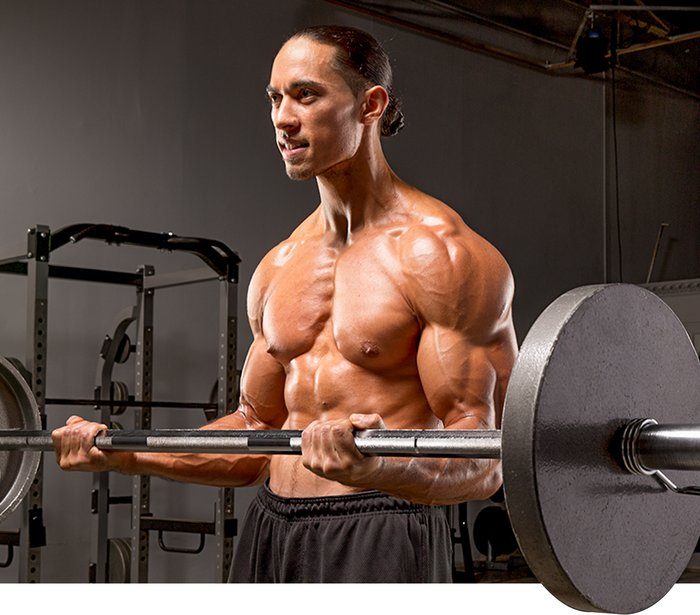
Doing your reps so deliberately enables you to feel the muscle fibers gradually shortening as you approach the muscle's fully contracted position, and then to feel them gradually stretch back out to their full length.
Just as you can translate what you learn from machines to free weights, you can also use slow reps to develop the mind-muscle connection, then apply what you've learned when you go back to lifting at your normal rep tempo.
Technique 4: Static holds
Static holds are a nearly extinct intensity technique popularized 40 years ago by high-intensity-training advocates such as Arthur Jones and Mike Mentzer. These holds are performed by stopping a rep at a given point in the range of motion and holding that position for 5-30 seconds.
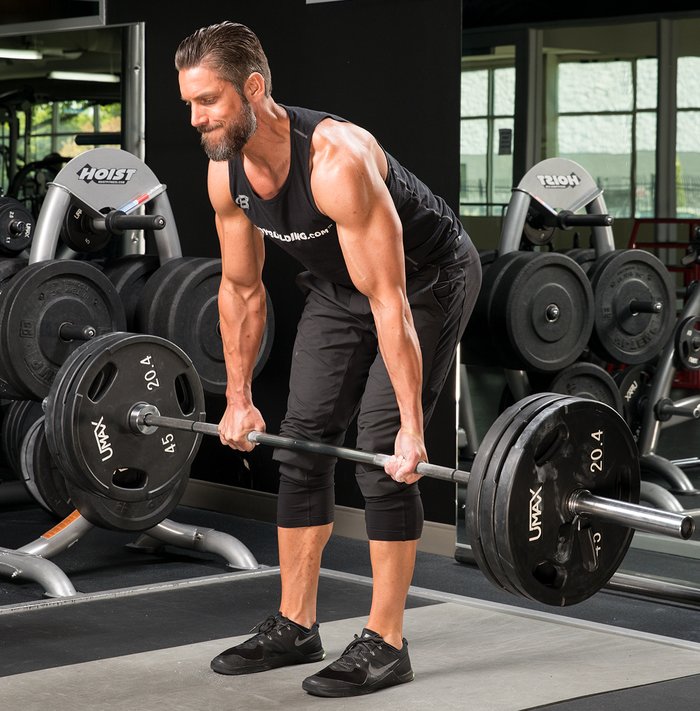
Just as with slow-motion reps, static holds force you to feel exactly how that muscle works. Over time, you'll learn to become very aware of the muscle, not only in the fully contracted or flexed position, but at all points from full stretch to full contraction.
Technique 5: Palpation
I saved the least-used, but perhaps most-effective, technique for last. To palpate means to feel, as in "to physically touch." If you're curling with your right arm, you palpate your right biceps by placing your left hand on it and feeling the muscle as it contracts and stretches.
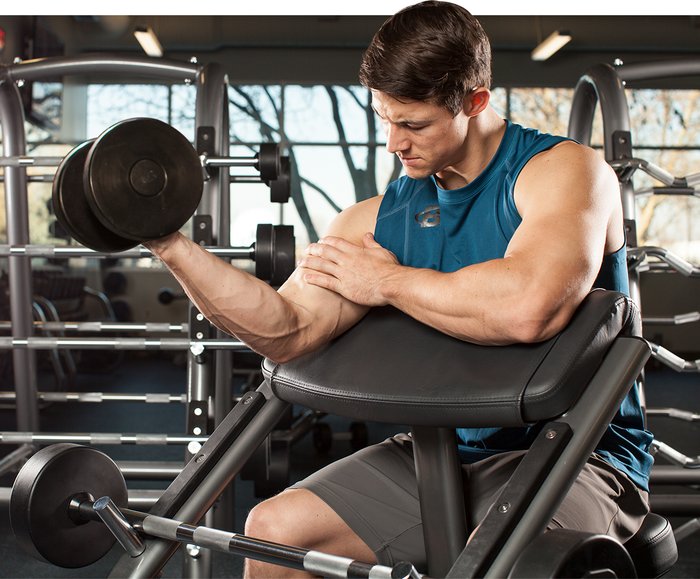
You may have seen a personal trainer touching a client's muscle to indicate to the client where he or she should feel a certain exercise. Palpating goes a step further because, by palpating it yourself, you can feel the muscle working from both inside and out. You'll find that this technique puts you in touch with your muscles at a deep level.
Master the mind-muscle connection and start growing now!
Once you've mastered the mind-muscle connection, you'll no longer be mindlessly lifting weights like so many people do. Instead, each rep will be an exercise in intentional contractions and stretches, making sure the right muscles are doing the right work in the right way.
By concentrating on your target muscles and feeling how they perform against resistance, you'll get far more out of your workouts than most lifters think possible—and you'll finally see those lagging body parts start to make some progress.
Stop just lifting weights and start training your muscles—and your mind. The mind-muscle connection is the key to greater gains, and now you know how to make it happen!



